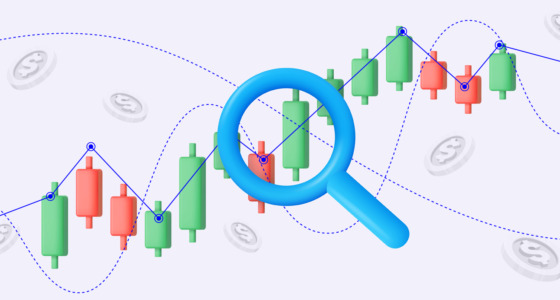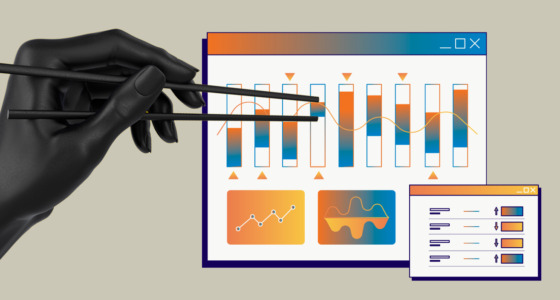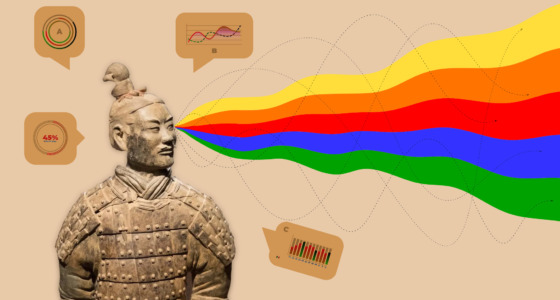

Rational choice theory is a framework for understanding and often formally modeling social and economic behavior. In this article, we will explain what it is, highlight the main advantages and disadvantages of the theory and give examples of its application.
What is rational choice theory?
Rational choice theory is a concept that says individuals use rational calculations to achieve results consistent with their personal goals. These outcomes are linked to maximizing the self-interests of the individual. People use a rational approach because they expect benefits that would benefit them and want the satisfaction of using the limited option available to them.
Rational choice theory is often compared to the concepts of the invisible hand, rational actors, and self-interest. Economists often argue that theory-related factors are good for the world economy as a whole.
Understanding rational choice theory
Understanding this theory isn’t difficult at all. We use it daily when we make decisions, even if we’re unaware.
The basis of rational choice theory is the probability of involvement from rational actors. They are individuals who make rational choices in the economy after accessing and interpreting the information they have. The rational actors create the foundation of rational choice theory. There’s an assumption that says rational actors always try to maximize their benefits and minimize the losses in any situation.
Economists use this assumption to develop models and predict how people behave in certain situations. It is part of broader studies and helps them understand the nature of rationality in society.
Self-interest and the invisible hand
Adam Smith, one of the first economists to develop the foundational axioms of rational choice theory, put forth the idea that people are guided by an invisible hand.
He highlighted his studies of self-interest and the invisible hand theory in his book, “An Inquiry Into The Nature and Causes of the Wealth of Nations”, published in 1776.
The invisible hand is the unseen force that drives individuals to act in their self-interest. For example, it motivates people to work hard, save money, and invest in areas that will improve their lives and influences a free market economy.
Smith believed that this self-interested behavior ultimately benefits society as a whole. When people are left to their own devices and allowed to pursue their own interests, they will naturally gravitate towards those activities that will improve their lives and the lives of those around them.
Further developments in rational choice theory also deny the negative misconceptions related to self-interest. According to the theory, rational actors who act in their interests and rationality make decisions that prove to be beneficial for the whole economy later on.
Economists who favor the invisible hand theory advocate for less government intervention and more free-market exchange opportunities. They believe that freedom of production and consumption allows the economy to flourish efficiently. And this is only possible when each individual is acting out of their self-interest. The constant interplay of individual pressure of market supply and demand causes the prices to flow more naturally and makes trade flow smoother.

Rational choice theory vs. Behavioral economics
Many economists fight over the accuracy of rational choice theory and the invisible hand theory. Those who disagree point out that individuals do not always go towards rational decision-making that maximizes utility. This is how behavioral economics was born.
This science has developed to study what happens when people make economic decisions. It’s a new intervention for explaining the economic decision-making processes of individuals and institutions.
Behavioral economics tries to explain why individual actors sometimes make irrational decisions using a psychological perspective. It also suggests why and how their behavior does not always follow the predictions of economic models.
According to critics and objectors of the rational decision-making process, in an ideal world, people always make optimal decisions that provide them with ultimate benefits and satisfaction. But the reality is we are not living in an ideal world; in the real world, emotions and external factors more often move people.
So the results of these studies consistently show that people do not always behave rationally. Still, their decision-making can often be explained by other factors such as social norms, emotions, and mental shortcuts.
The Nobel Laureate Herbert Simon rejected the concept of perfect rationality in mainstream economics and introduced the theory of bounded rationality instead.
According to the bounded rationality model of decision-making, people cannot always get the full information needed to make a decision. They do not conduct a full cost-benefit analysis when choosing the best solution but rather choose the one that meets their personal adequacy criteria. An example of bounded rationality would be a trader who made a risky decision to sell his shares due to incomplete market information and haste.
The economist Richard Thaler showed further limitations of the idea that humans operate as rational actors. Thaler’s assumption of mental accounting depicts how people place greater value on some dollars than others. Yet, at the same time, all these dollars have the same value. For example, people decide to go to another mall to save $20 on a $40 purchase, but they won’t go to another store to save the same $20 on a $2,000 item.
Advantages and disadvantages of rational choice theory
One of the many benefits of rational choice theory is that it can help explain individual and collective behaviors. All teachings related to it try to give meaning to the things we see in the everyday world. The rational choice theory explains why people, groups, and society make certain choices based on special costs and rewards.
Also, this theory can help to explain behavior that seems irrational. Because the central idea of rational choice theory is that all behavior is rational, any action can be surveyed for its underlying rational motivations.
Thus, the main advantages of the rational choice theory are:
- The process of rational decision-making favors explaining individual and collective behaviors.
- It tries to give meaning to the things we observe in the world.
- Rational approach meaning explains behavior that seems or sounds irrational.
Disadvantages of the theory include:
- Individuals aren’t always able to make rational decisions.
- In reality, people are often moved by external factors that are not rational such as emotions.
- Individuals can’t have complete access to the information that they would need to make the most rational decisions every time.
- People value some amounts more than others.
Examples of rational choice theory
According to the rational decision-making model, people make decisions by trying to maximize their benefits while minimizing their costs. Therefore, rational investors will quickly buy the stocks priced too low and short-sell the stocks priced too high.
An example of a rational consumer also would be a person choosing between two cars. Car B is cheaper than Car A, and that’s why the consumer purchases option B.
What is rational choice theory?
The key point of rational choice theory is that people don’t randomly select the products off the shelf. Instead, they make a decision based on analysis. So first, they use a logical decision-making process that considers the costs and benefits of various options, comparing them with each other. Then, they choose the option that provides the most benefits or the least costs.
In other words, the rational choice theory states that people are rational beings who make logical decisions based on their self-interest. The theory has its roots in microeconomics, but it has also been applied to other fields, such as criminology and political science. It has been used to explain everything from voting behavior to why people commit crimes.
Who founded rational choice theory?
Adam Smith, a Scottish economist, is credited with being the father of rational choice theory. In his 1776 book, “An Inquiry into the Nature and Causes of the Wealth of Nations”, Smith put forth his idea of the invisible hand.
The invisible hand is the concept that people pursuing their self-interests ultimately benefit society. That is because they are constantly making decisions that help to optimize resources and production.
For example, a business owner may decide to open a new store to earn more. However, doing so will also create jobs and contribute to the economy.
What are the main goals of rational choice theory?
The main goal of rational choice theory is to understand human behavior better. Understanding how people make decisions can make it easier to predict what they will do in certain situations.
It explains why individuals and larger groups make certain choices based on specific costs and rewards. According to the theory, individuals use their self-interests to make choices that will provide them with the ultimate benefit. Then, they compare and weigh the options and choose the one they think will serve them the best.
What is rational choice theory in international relations?
Governments, states, non-governmental organizations, and multinational corporations all exist with humans. To understand the actions of these organizations, we’ll have to understand the actions and thoughts of the humans running them.
Rational choice theory can be applied to this field to understand better why states make their own decisions. In addition, this theory helps to explain how leaders and other important people in these organizations make decisions. Rational choice theory can also predict these actors’ future actions.
What are the strengths of rational choice theory?
Among the many strengths of this theory, one is the versatility of its application. It can be applied to many different disciplines to explain human behavior better.
Another strength is that it considers that people are rational beings who make decisions based on their own self-interest. That is a key part of understanding why people do what they do.
The rational choice theory also encourages individuals to make sound economic decisions. And by making them, they can acquire more tools that will allow them to maximize their preferences in the future.
The bottom line
Rational choice theory is a powerful tool that can be used to explain human behavior. It has many strengths, including its ability to consider that people are rational beings who make decisions based on self-interest.
Additionally, the theory encourages individuals to make sound economic decisions. People can improve their lives and the world around them by understanding and applying it.









